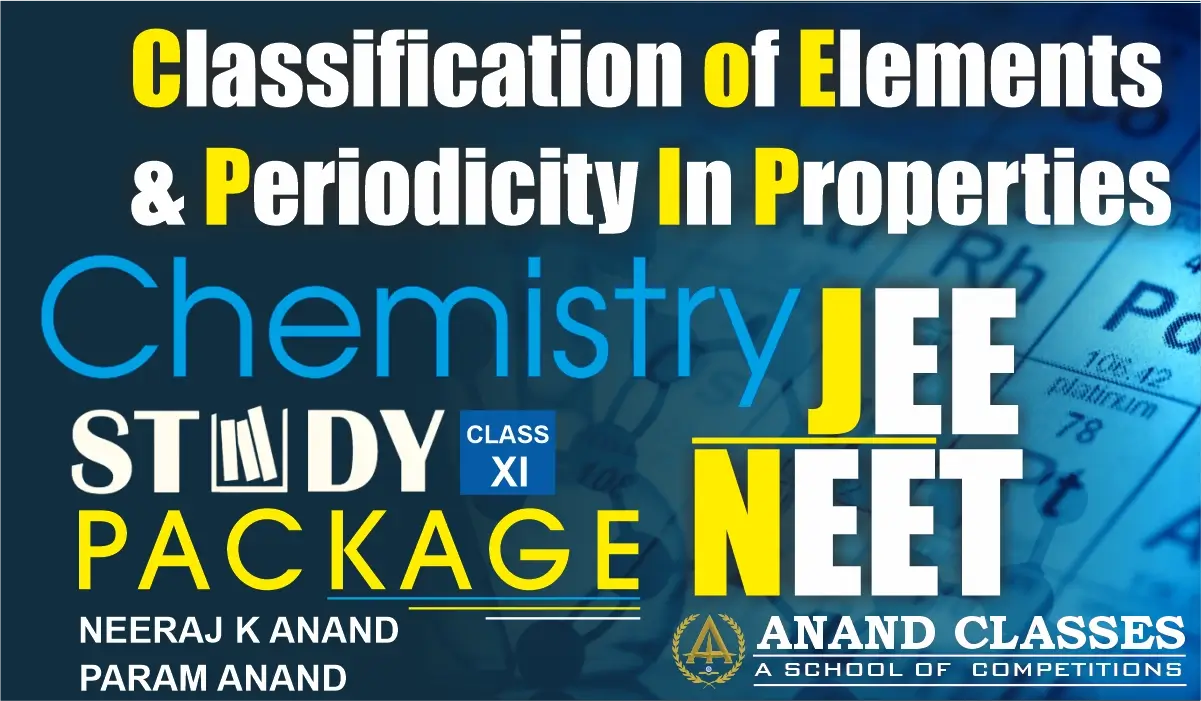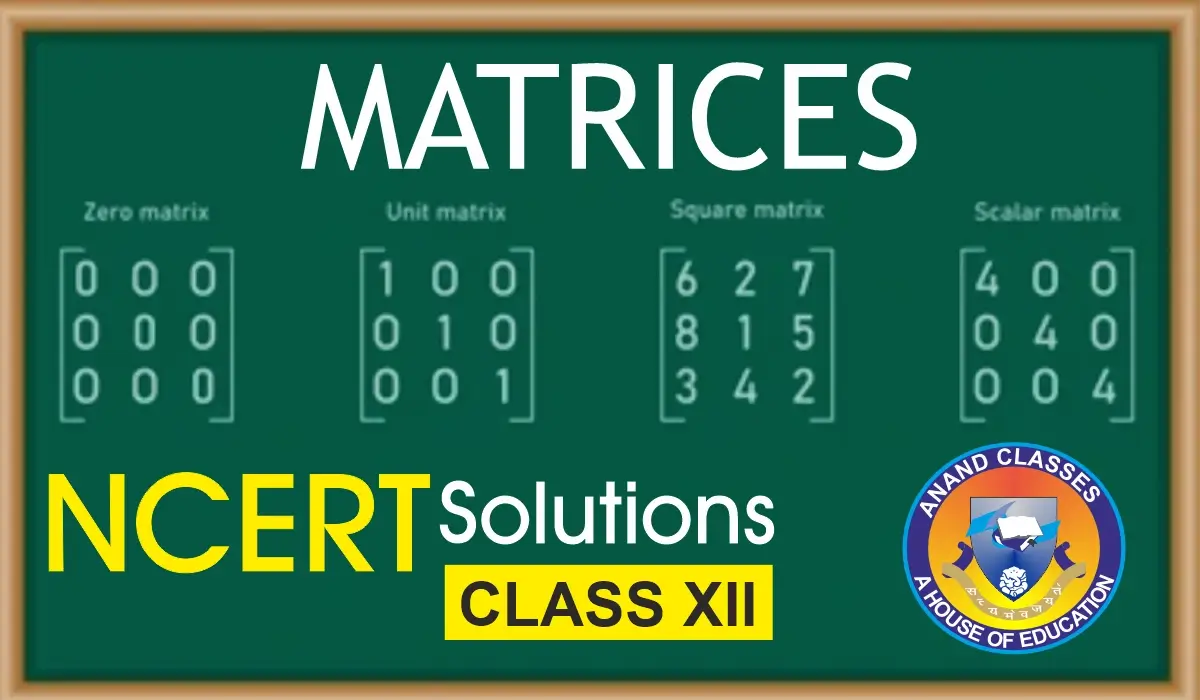ANAND CLASSES notes of s-block elements of the periodic table include all elements whose last electron enters the s-orbital. These elements, which consist of alkali metals (Group 1) and alkaline earth metals (Group 2), are highly significant in inorganic chemistry because of their reactivity, periodic trends, and wide applications in daily life. This article is authored by Neeraj Anand and published by Anand Technical Publishers to provide clear and exam-oriented explanations for JEE and NEET students, following the NCERT Class 11 Chemistry syllabus.
🧪 Classification of Elements into s-Block Elements
🌟 s-Block Elements: An Overview
The elements of the periodic table in which the last electron enters the s-orbital are known as s-block elements. The s-orbital can accommodate a maximum of two electrons.
👉 General Electronic Configuration: ns1−2, where n = 1 to 7.
🔷 Group 1 Elements – Alkali Metals
🧪 What Are Group 1 Elements?
Group 1 elements of the periodic table are called Alkali Metals. They are highly reactive metals and are found in the s-block because their outermost electron enters the s-orbital.
👉 General Electronic Configuration: ns1 (where n = 2 to 7)
Here’s a clean table of the electronic configuration of Group 1 elements (Alkali Metals + Hydrogen). This is perfect for JEE/NEET/CBSE notes:
⚡ Group 1 Elements: Electronic Configuration
| Element | Symbol | Atomic Number (Z) | Electronic Configuration | Valence Shell Configuration |
|---|---|---|---|---|
| Hydrogen | H | 1 | 1s¹ | 1s¹ |
| Lithium | Li | 3 | 1s² 2s¹ | 2s¹ |
| Sodium | Na | 11 | 1s² 2s² 2p⁶ 3s¹ | 3s¹ |
| Potassium | K | 19 | 1s² 2s² 2p⁶ 3s² 3p⁶ 4s¹ | 4s¹ |
| Rubidium | Rb | 37 | [Kr] 5s¹ | 5s¹ |
| Caesium | Cs | 55 | [Xe] 6s¹ | 6s¹ |
| Francium | Fr | 87 | [Rn] 7s¹ | 7s¹ |
✨ Key Points:
- All Group 1 elements have one electron in the outermost s-orbital.
- General electronic configuration: [Noble Gas] ns¹
- This single valence electron is responsible for:
- High reactivity 🧪
- Strong reducing power
- Formation of unipositive ions (M+)
🌟 List of Group 1 Elements (Physical State and Appearance)
| Element | Symbol | Atomic Number | Physical State | Appearance |
|---|---|---|---|---|
| Lithium | Li | 3 | Solid | Silvery-white |
| Sodium | Na | 11 | Solid | Silvery-white |
| Potassium | K | 19 | Solid | Silvery-grey |
| Rubidium | Rb | 37 | Solid | Silvery-grey |
| Cesium | Cs | 55 | Liquid (near room temperature) | Golden |
| Francium | Fr | 87 | Liquid (radioactive) | Unknown (highly unstable) |
⚙️ Important Properties of Group 1 Elements
- 💥 Highly reactive, especially with water.
- 🌡️ Low melting and boiling points (compared to other metals).
- ⚖️ Soft metals – can be cut with a knife.
- 📈 Reactivity increases down the group.
- 💧 React with water to form alkalies (strong bases) and hydrogen gas.
- 🧪 Form colorless ionic compounds.
🔬 Reaction with Water
$$\text{2Na + 2H}_2\text{O} \rightarrow 2NaOH + H_2 \uparrow$$
This reaction produces:
- Alkali (NaOH) – a strong base
- Hydrogen gas – burns with a ‘pop’ sound
📌 Trends in Group 1 Elements
| Property | Trend Down the Group |
|---|---|
| Atomic Radius | Increases |
| Ionization Energy | Decreases |
| Metallic Character | Increases |
| Density | Increases (except K < Na) |
| Melting and Boiling Points | Decrease |
💡 Quick Facts
- 🟡 Cesium is a liquid near room temperature and has a golden glow.
- ☢️ Francium is radioactive and extremely rare.
- 🧪 All alkali metals form +1 ions (M⁺+) in reactions.
- 🚫 Must be stored under kerosene/oil to prevent oxidation.
🧠 Do You Know?
- 🔋 Lithium is used in rechargeable batteries.
- 🍽️ Sodium compounds like NaCl (common salt) are essential in our diet.
- 🚀 Potassium nitrate (KNO3) is a component in gunpowder.
- ⚡ Cesium clocks are used in atomic timekeeping.
🔷 Group 2 Elements – Alkaline Earth Metals
🧪 What Are Group 2 Elements?
Group 2 elements of the periodic table are called Alkaline Earth Metals. These elements belong to the s-block as their outermost electron enters the s-orbital, specifically with the configuration ns².
👉 General Electronic Configuration: ns2 (where n = 2 to 7)
Perfect 👍 Here’s the side-by-side continuation with Group 2 elements (Alkaline Earth Metals) for your notes.
⚡ Group 2 Elements: Electronic Configuration
| Element | Symbol | Atomic Number (Z) | Electronic Configuration | Valence Shell Configuration |
|---|---|---|---|---|
| Beryllium | Be | 4 | 1s² 2s² | 2s² |
| Magnesium | Mg | 12 | 1s² 2s² 2p⁶ 3s² | 3s² |
| Calcium | Ca | 20 | 1s² 2s² 2p⁶ 3s² 3p⁶ 4s² | 4s² |
| Strontium | Sr | 38 | [Kr] 5s² | 5s² |
| Barium | Ba | 56 | [Xe] 6s² | 6s² |
| Radium | Ra | 88 | [Rn] 7s² | 7s² |
✨ Key Points:
- All Group 2 elements have two electrons in the outermost s-orbital.
- General electronic configuration: [Noble Gas] ns2
- Properties influenced by this configuration:
- Divalent cations (M2+) formation
- Moderate reactivity (less than Group 1, but still reactive)
- Basic oxides & hydroxides (alkaline in nature)
🌟 List of Group 2 Elements (Physical State and Appearance)
| Element | Symbol | Atomic Number | Physical State | Appearance |
|---|---|---|---|---|
| Beryllium | Be | 4 | Solid | Steel-grey |
| Magnesium | Mg | 12 | Solid | Silvery-white |
| Calcium | Ca | 20 | Solid | Silvery-white |
| Strontium | Sr | 38 | Solid | Silvery-grey |
| Barium | Ba | 56 | Solid | Silvery-white |
| Radium | Ra | 88 | Solid | Silvery-white (Radioactive) |
⚙️ Key Properties of Group 2 Elements
- ⚗️ Less reactive than Group 1 but still reactive, especially with water and acids.
- 🔥 Burn in air to form oxides.
- 💧 Oxides are basic and sparingly soluble in water — hence the name alkaline.
- 🧱 Commonly found in earth’s crust as minerals and ores.
- ⚖️ Form divalent ions (M2+) in compounds.
🧪 Reactions of Group 2 Elements
With Water (except Be): $$\text{Ca + 2H}_2\text{O} \rightarrow \text{Ca(OH)}_2 + \text{H}_2 \uparrow$$
- Forms alkaline hydroxides.
- Beryllium does not react with water due to formation of a passive oxide layer.
With Oxygen: $$2Mg + O_2 \rightarrow 2MgO$$
- Forms white metal oxides that are basic in nature.
📊 Trends in Group 2 Elements
| Property | Trend Down the Group |
|---|---|
| Atomic Radius | Increases |
| Ionization Energy | Decreases |
| Reactivity | Increases |
| Melting and Boiling Points | Decrease |
| Solubility of Hydroxides | Increases |
💡 Quick Facts
- ⚠️ Radium (Ra) is radioactive and was once used in luminous paints.
- 💊 Magnesium hydroxide is used as an antacid (milk of magnesia).
- 🏗️ Calcium compounds like CaCO3 are found in chalk, marble, and limestone.
- 🚫 Beryllium is toxic and has covalent character in its compounds.
🧠 Do You Know?
- 🧪 Magnesium burns with a bright white flame, used in fireworks and flares.
- 🦴 Calcium is essential for bones and teeth in the human body.
- 💡 Barium sulfate is used in X-ray imaging of the digestive tract.
- 🪦 Radium was discovered by Marie Curie and is a source of radiation.
🔹 Group 1 and Group 2 Elements
- ✅ Group 1 Elements are known as Alkali Metals.
💧 They react with water to form alkalies (basic solutions). - ✅ Group 2 Elements are known as Alkaline Earth Metals.
🌱 Their oxides also form alkalies with water and are commonly found in the earth’s crust.
📊 Key Characteristics of s-Block Elements
| Property | Description |
|---|---|
| 🧬 Electron Configuration | Ends in ns1 or ns2 |
| 📦 Total Number | 14 s-block elements in total |
| ☢️ Radioactive Elements | Francium (Fr-87) and Radium (Ra-88) |
| 🌬️ Gaseous Elements | Hydrogen (H) and Helium (He) |
| 💧 Liquid Elements | Cesium (Cs) and Francium (Fr) are liquid at or near room temperature |
💡 Quick Facts to Remember
- 🌍 Alkaline earth metals are called so because they are found in earth’s crust and their oxides form alkalies.
- 🌊 Alkali metals react vigorously with water.
- 🔬 Francium and Radium are radioactive.
- 🧊 Hydrogen and Helium are gaseous at room temperature.
- 🧪 Cesium and Francium are liquid s-block elements.
🧠 Do You Know?
- Francium is the most electropositive element in the periodic table.
- Helium, though placed in group 18 due to its inert nature, electronically belongs to the s-block.
- Cesium has a melting point of just 28.5°C, which is why it’s liquid in hot climates.
🔬 Frequently Asked Questions: S-Block Elements (Groups 1 & 2)
1. What are S-Block elements?
S-Block elements are those whose outermost electrons occupy an s-orbital, comprising Group 1 (alkali metals) and Group 2 (alkaline earth metals). Some sources also consider hydrogen and helium—though helium is a noble gas, it has its electron in the s-orbital.
2. How many S-Block elements are there, and which are they?
There are 14 elements:
- Group 1: Hydrogen (H), Lithium (Li), Sodium (Na), Potassium (K), Rubidium (Rb), Caesium (Cs), Francium (Fr)
- Group 2: Beryllium (Be), Magnesium (Mg), Calcium (Ca), Strontium (Sr), Barium (Ba), Radium (Ra).
3. What is their electronic configuration?
- Group 1: Outer electron in ns¹
- Group 2: Two outer electrons in ns²
In both groups, the valence electron is in an s‑orbital, which defines their chemistry.
4. What are the general physical properties?
- Soft, silvery-white metals
- Low melting and boiling points
- Low densities, especially in Group 1
- Good conductors of heat and electricity
These trends arise due to their larger size, electropositive nature, and simple electronic structure
5. What about their chemical behavior?
- Highly reactive, especially with water and oxygen
- Electropositive with low ionization energies, making them strong reducing agents
- Form basic oxides and hydroxides, like NaOH, Ca(OH)₂
Reactivity increases down the group.
6. What is the “diagonal relationship” in S-Block?
Certain elements show similarities across diagonal positions in adjacent groups:
- Li and Mg
- Be and Al
These pairs behave similarly due to comparable ionic sizes and polarizing power.
7. Why are S-Block elements called strong reducing agents?
Because of their low ionization energy, they easily lose electrons. As a result, they reduce other species by donating electrons, and themselves oxidize easily.
8. What flame colors do they give and why is that significant?
When heated in flame tests:
- Sodium gives a bright yellow
- Potassium gives lilac/purple
- Calcium gives brick-red
These distinct colors are due to electronic transitions and are used for qualitative tests.
9. Where do these elements appear in everyday life & industry?
- Sodium (as NaCl) in food, water treatment, chemical manufacturing
- Calcium in bones, cement, and plaster
- Magnesium and other metals used in fireworks, fertilizers, antacids, and batteries
- They’re also vital for metallurgy and chemical synthesis.
10. Are there hazards associated with handling S-Block elements?
Yes. Because many are highly reactive:
- Alkali metals (e.g. Na, K, Cs) can ignite with moisture or oxygen
- Must be stored under mineral oil or inert gas and handled with proper safety precautions
- Some elements (e.g. Be, Ra) may be toxic or radioactive.
📚 Buy Study Material & Join Our Coaching
For premium study materials specially designed for JEE, NEET, NDA, and CBSE/ICSE Classes, visit our official study material portal:
👉 https://anandclasses.net.in/
To enroll in our offline or online coaching programs, visit our coaching center website:
👉 https://anandclasses.co.in/
📞 Call us directly at: +91-94631-38669
💬 WhatsApp Us Instantly
Need quick assistance or want to inquire about classes and materials?
📲 Click below to chat instantly on WhatsApp:
👉 Chat on WhatsApp
🎥 Watch Video Lectures
Get access to high-quality video lessons, concept explainers, and revision tips by subscribing to our official YouTube channel:
👉 Neeraj Anand Classes – YouTube Channel


